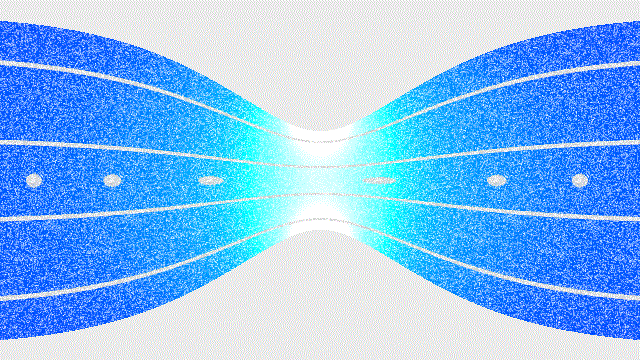The Venturi Effect: A Narrow Pathway to High Velocity and Low Pressure
How a Simple Constriction in Flow Leads to One of Physics’ Most Ingenious Fluid Dynamics Principles
By Thierry Dugnolle - Own work, CC0, https://commons.wikimedia.org/w/index.php?curid=18801480
In the quiet elegance of physical laws, few principles reveal the intricacies of motion and pressure as gracefully as the Venturi effect. First described by the 18th-century Italian physicist Giovanni Battista Venturi, this phenomenon has found enduring applications in engineering, medicine, aviation, and beyond. At its core, the Venturi effect captures how a fluid behaves when its path narrows and how nature compensates by altering pressure and velocity. Though rooted in classical physics, its relevance continues to echo through modern design and technology.
Understanding the Principle
The Venturi effect is a direct consequence of Bernoulli’s principle, which states that for an incompressible, frictionless fluid, the total mechanical energy remains constant. This means that if the velocity of the fluid increases in one region, the pressure must decrease in that region to conserve energy.
When a fluid enters a constricted section of a pipe or channel, the cross-sectional area through which it flows becomes smaller. Since the same amount of fluid must pass through per unit of time, the fluid accelerates. This increase in velocity results in a corresponding decrease in pressure within the constriction. The result is a powerful dynamic: a change in geometry leads to changes in fluid behaviour, which can be harnessed in multiple ways.
Historical Context
Giovanni Battista Venturi first noted this effect in the late 1700s, but it was only in the 19th century that scientists and engineers began to use it in practical applications. The idea gained traction, particularly in the field of hydrodynamics and was formalised through experiments and theoretical models that supported Venturi’s observations.
Applications Across Fields
The beauty of the Venturi effect lies in its simplicity and versatility. It has been harnessed across domains to solve practical problems with elegance and efficiency.
1. Engineering and Fluid Measurement:
Venturi meters, used to measure the flow rate of fluids in pipes, exploit the Venturi effect to provide accurate readings without moving parts. These instruments are vital in water supply systems, chemical processing, and fuel pipelines.
2. Automotive and Aeronautics:
In carburettors, the effect is used to draw fuel into the air stream where it mixes before combustion. In aviation, the principle influences airspeed indicators and contributes to lift generation over curved wing surfaces.
3. Medical and Respiratory Devices:
Venturi masks use controlled constriction to deliver a precise mixture of oxygen and air to patients. Nebulisers and atomisers, too, depend on the principle to aerosolise medication efficiently.
4. Industrial Processes:
Spray painting, gas burners, and even vacuum pumps make use of low-pressure zones created by constrictions to mix or transport substances.
Scientific Implications
The Venturi effect also provides insights into the broader study of fluid dynamics. It demonstrates how pressure, velocity, and geometry are interrelated, and it reinforces the principle that energy within a system will be redistributed in response to changes in constraints. These ideas inform more complex theories used in aerodynamics, meteorology, and environmental science.
Limitations and Considerations
While the effect offers powerful advantages, it comes with limitations. The phenomenon assumes an ideal fluid with no viscosity or turbulence. In real-world scenarios, these factors can introduce inefficiencies or require compensatory mechanisms. Designers must account for such deviations to ensure systems perform as expected under varying conditions.
In conclusion, the Venturi effect exemplifies how nature responds to constraints by adjusting rather than resisting. By understanding how a simple narrowing of passage can lead to a surge in velocity and a dip in pressure, engineers and scientists have developed tools and systems that range from life-saving medical devices to precision-engineered instruments. What began as an observation of fluid in motion has become a cornerstone of applied physics, reminding us that even the most straightforward principles can lead to profound innovation.
As always, feel free to reach out with any questions or comments. Happy musing!




